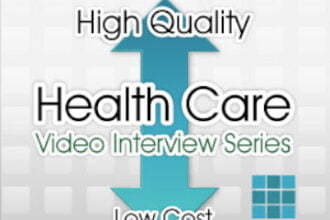Today was a good news day. The headlines, at least, would have us believe that we are making great strides in achieving the Triple Aim, dealing with quality, access and cost issues.
Today was a good news day. The headlines, at least, would have us believe that we are making great strides in achieving the Triple Aim, dealing with quality, access and cost issues.
Exhibit A: Deaths due to Healthcare-Acquired Conditions are Down. Per the WaPo, AHRQ says:
Hospitals reported 1.3 million fewer hospital-acquired infections in all between 2011-2013 compared to the rate of mistakes that hospitals made in 2010, according to the report from the Department of Health and Human Services. That represented a 17 percent drop in hospital errors from 2010, but about 12 percent of all hospitalizations as of 2013 still experienced an adverse event during the course of care.
The reduction of these avoidable incidents — such as falls, pressure ulcers, adverse drug events and more — meant $12 billion in savings to the health-care system between 2011 and 2013, according to HHS.
These improvements are correlated with widespread policies (among public and private payors) to not pay for preventable readmissions, and with quality improvements promoted by the “Partnership for Patients” (though that program has been criticized for its lack of transparency; a NEJM piece said that made it hard to say whether it improved care).
Exhibit B: Uninsurance is Down. The Urban Institute’s recent survey found
that the number of uninsured adults fell by an estimated 10.6 million, or nearly one-third, from September 2013 to September 2014. . . . [and] that the percentage of people without insurance dropped from 17.7 percent to 12.4 percent nationally, due to millions of previously uninsured people enrolling in health insurance marketplace plans and Medicaid.
There has been a drop in uninsurance even in states that have rejected the ACA’s Medicaid expansion, but that drop is 1/3 less than in the states that have implemented the Medicaid expansion.
Exhibit C: Cost Inflation is down. Costs aren’t going down — just the rate of increase. The percentage of GDP devoted to healthcare is holding steady. Health Affairs published this news today:
In 2013 US health care spending increased 3.6 percent to $2.9 trillion, or $9,255 per person. The share of gross domestic product devoted to health care spending has remained at 17.4 percent since 2009. Health care spending decelerated 0.5 percentage point in 2013, compared to 2012, as a result of slower growth in private health insurance and Medicare spending. Slower growth in spending for hospital care, investments in medical structures and equipment, and spending for physician and clinical care also contributed to the low overall increase.
The money quote: “The key question is whether health spending growth will accelerate once economic conditions improve significantly,” said Micah Hartman, a statistician in the Office of the Actuary at CMS and lead author of the Health Affairs article. “Historical evidence suggests it will.”
So I ask again the question I keep asking about this issue: Will we not really do much of anything about this national crisis unless health care costs blow through 20% of GDP?
We’ve all seen one version or another of this chart:
(I borrowed this version from here.)
So, bottom line, I suppose some things are headed in the right direction, but others, not so much. A $12 Billion savings due to reductions in HACs represents only a teeny-tiny drop in the bucket: 0.4% of the total spend. Not really a big deal. The ACA is really making a dent in uninsurance, and that’s a good thing. But spending growth is likely to keep on keepin’ on as we ease out of the Great Recession unless we make some fundamental changes in the health care system. At the moment, these don’t seem to be in the cards.
Dealing with the three-legged stool of quality, cost and access is really, really hard. Making progress on one of these fronts is a good start, but let’s not get complacent. There’s a lot of hard work left to do.







